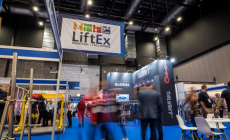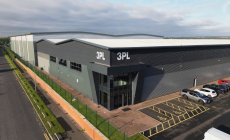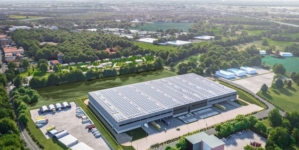-
Women Leading the Way in the UK Material Handling Industry - December 12, 2025
-
LiftEx 2025 live from Liverpool - December 11, 2025
-
DATA ANALYSIS – THE FOUNDATION OF EVERY PEAK SEASON - December 5, 2025
-
Creative education specialists Creative Hut give 3PL full marks for onboarding excellence - December 5, 2025
-
Unlimited Industries raises $12M to build the AI construction company that will power America’s future - December 4, 2025
-
Scottish Leather Group gets full-support solution from Rushlift - December 4, 2025
-
Etaily lands strategic investment from Japan’s SMBC – bringing total funding to $24M for Social Commerce enablement platform - December 4, 2025
-
Winners lift their LEEA Awards and raise the industry - December 4, 2025
-
Prism eLogistics and Brand Angels Partnership Gives Brands the Full Package - December 3, 2025
-
New data shows Tesla in danger of losing its way as European consideration to buy Chinese cars jumps 16% in 12 months - December 3, 2025
Consider lighting ahead of forklifts for real energy savings,warehouse operators advised.
As they strive to cut costs from their operating processes, warehouse companies dedicate time and resources to ensuring that their materials handling equipment (MHE) fleets perform as energy efficiently as possible, yet they often overlook the one thing that does most to run up their energy bill: lighting.
It is estimated, that within any warehouse distribution centre, recharging the fuel cells of battery-powered forklifts and other MHE accounts for around 25 per cent of a company’s annual energy expenditure. The cost of lighting the building with old fashioned sodium luminaires meanwhile, makes up 70 per cent of the bill!
Savvy companies have realised this and more and more are introducing energy efficient LED luminaires throughout their stores and DCs and they’re enjoying an almost instant return on their investment.
“The ROI numbers are staggering,” says Stuart Cain, operations manager at Leicestershire-based luminaire specialist, Ecolighting.
For example a move to energy efficient lighting has allowed warehousing and transport specialist, Paul Ponsonby Ltd, to cut annual lighting costs from £15,035 to £3,030 – an annual saving of over £12,00 or 80 per cent. This means that the company will achieve payback in under three years.
Another third party logistics specialist, Great Bear, was able to slash its yearly lighting bill from £146,207 to £23,844 – a saving of £122,363 (83 per cent) in 12 months. The company’s annual CO2 emissions were also cut from 799,265 kg to 130,348 kg.
The tax breaks that are available to companies who install energy-saving lighting make the case for investment even more compelling.
“The Enhanced Capital Allowances (ECA) scheme encourages businesses to invest in energy saving lighting equipment that meets the performance standards set out in the Energy Technology List (ETL),” explains Stuart Cain.
He continues: “Lighting products that meet the ETL standards may be eligible for first year tax relief – meaning that you can write off the whole cost of the equipment against your taxable profits in the year that you buy it.
“This can be very helpful for cashflow purposes – although, of course, it makes sense to get confirmation from your supplier that the equipment meets the ETL criteria before you invest in it.” www.ecolightinguk.com

































